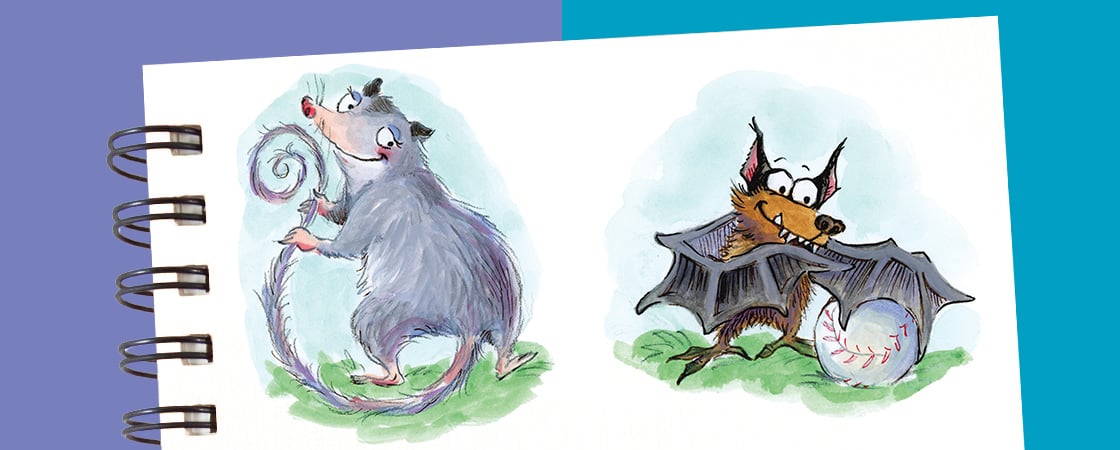N1: Then the game began.
N2: Rabbit had the ball.
Rabbit: Aaah, what is happening?
N3: Hawk had flown down and picked Rabbit up.
Hawk: Gotcha!
N1: Then Hawk dropped Rabbit, who dropped the ball.
N2: Rabbit ran and hid in the bushes.
N3: To this day, Rabbit still hides when he sees Hawk.
N1: Next Cardinal grabbed the ball.
N2: Then Bear got it away from Cardinal.
N3: And so the game continued. Neither side could score.
N1: Until Crane got the ball and soared toward the animals’ goal.
Crane: I’m going to score!
All Birds: Crane! Crane!
N2: It seemed the birds were going to win.
N3: Until a dark little shape flew out of a tree.
N1: It was Bat!
N2: He stole the ball from Crane!
All Birds: No! Stop him!
N3: Bat was a great flier, darting back and forth.
Blue Jay: I can’t catch him!
Cardinal: Where is he?
All Animals: Go, Bat, go!
N1: Just as the sun set, Whoosh!
N2: Bat scored the winning goal.
All Animals: Bat! Bat!
N3: This is how Bat came to be accepted as an animal.
Bear: Bat, you can decide what the birds must do.
Bat: You birds must leave this land for half of each year.
N1: So every fall, as the leaves change, the birds fly south for the winter.
N2: And every day as the sun sets, Bat still comes flying over to see if the animals need him to play ball.

